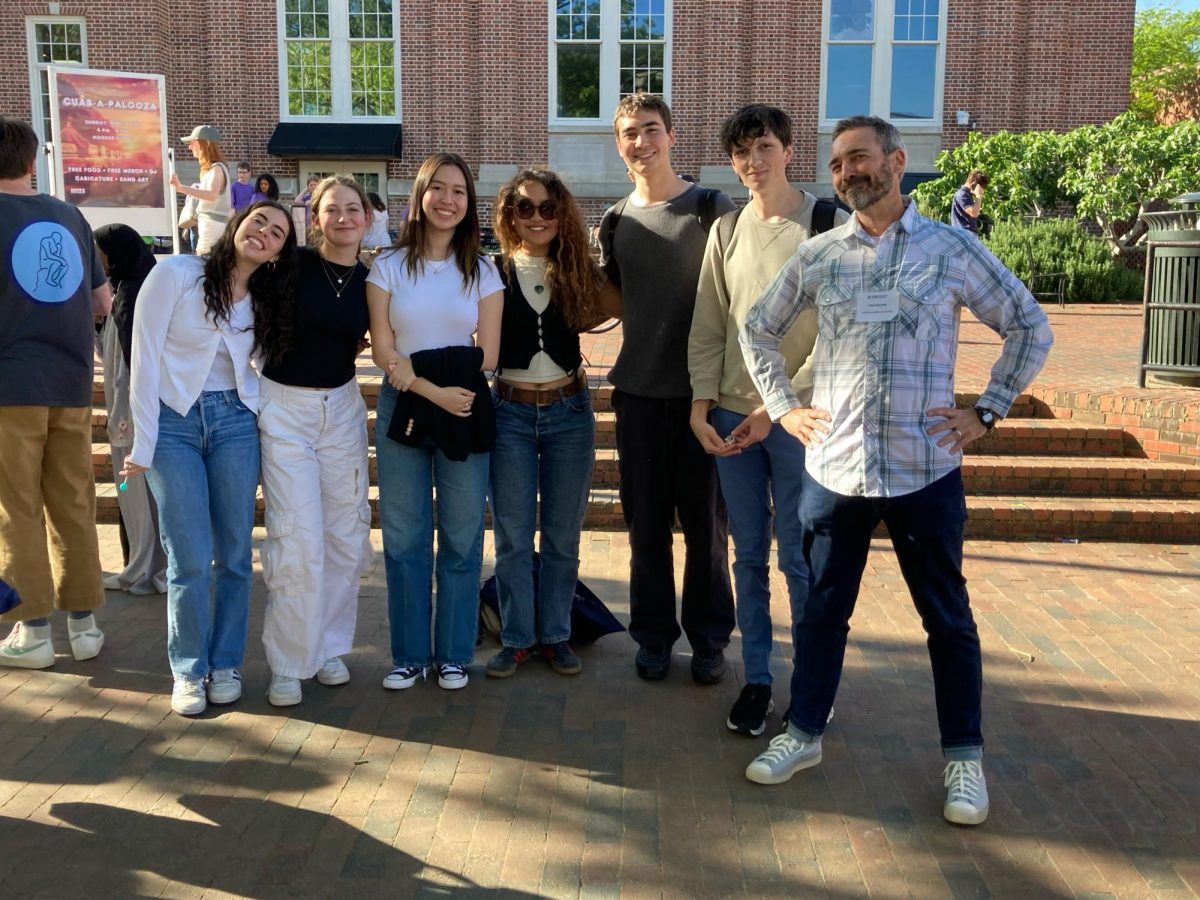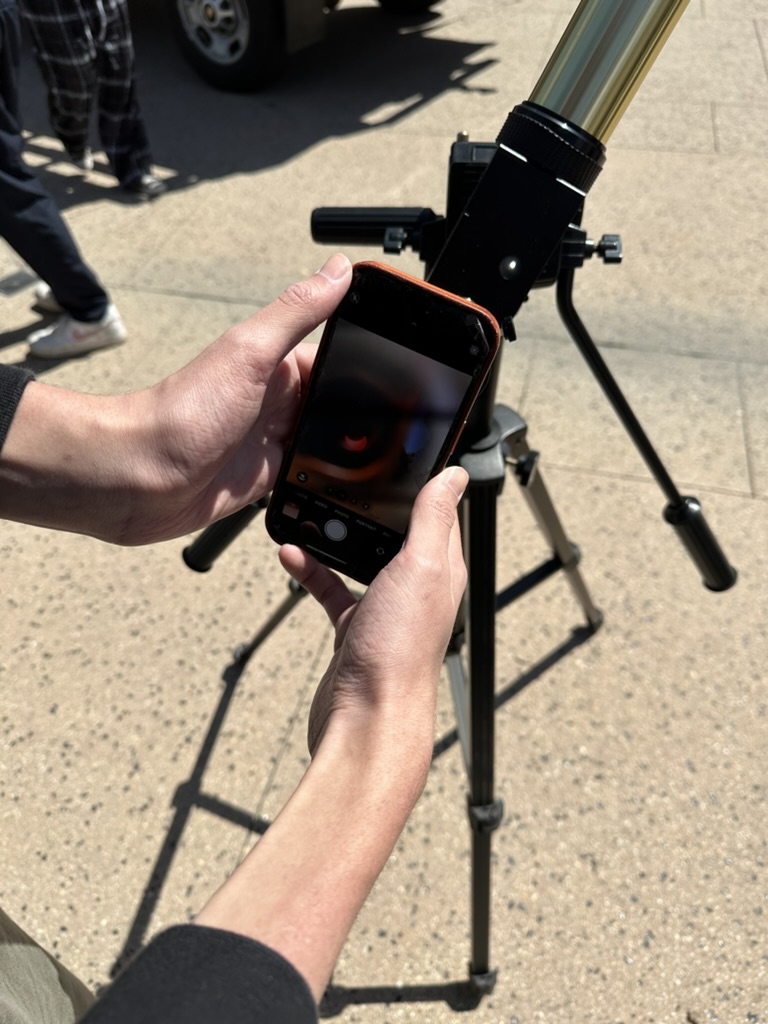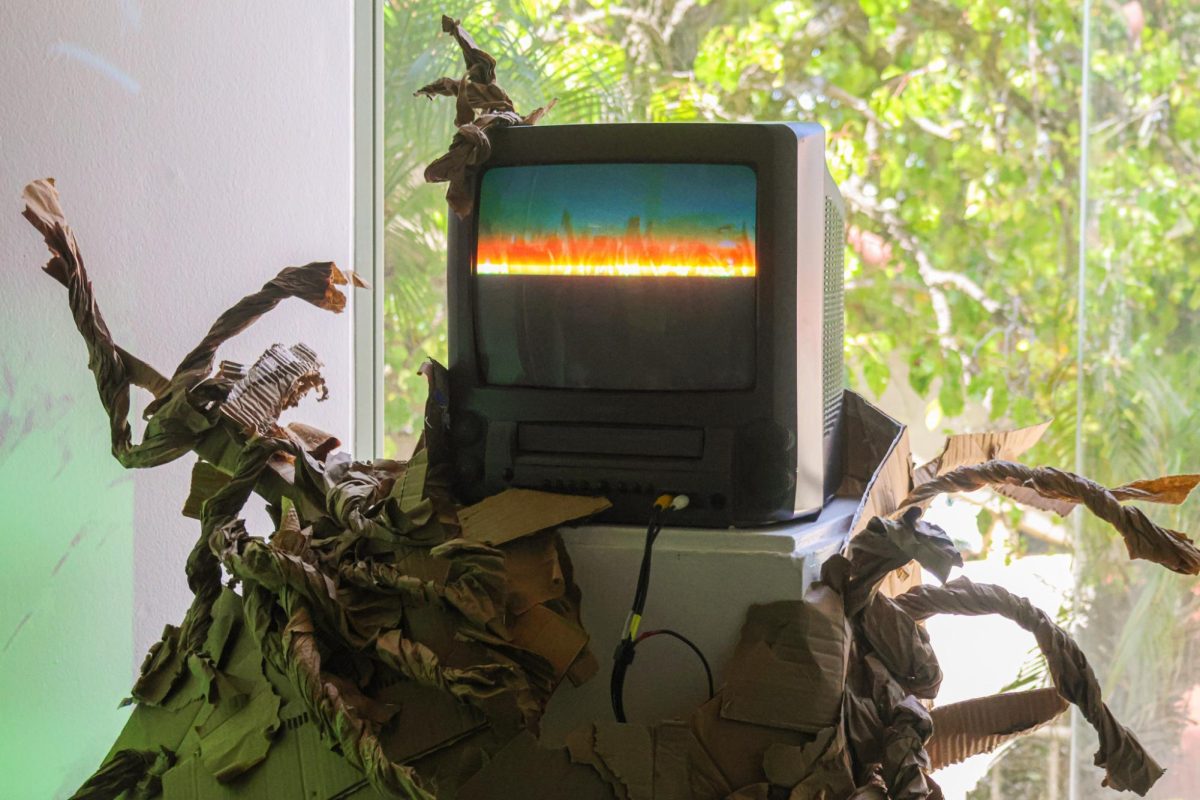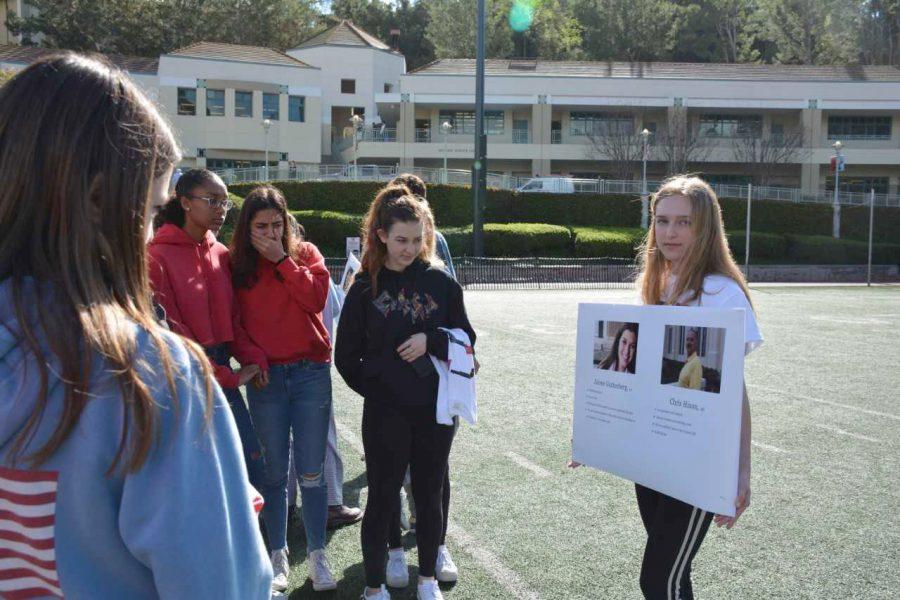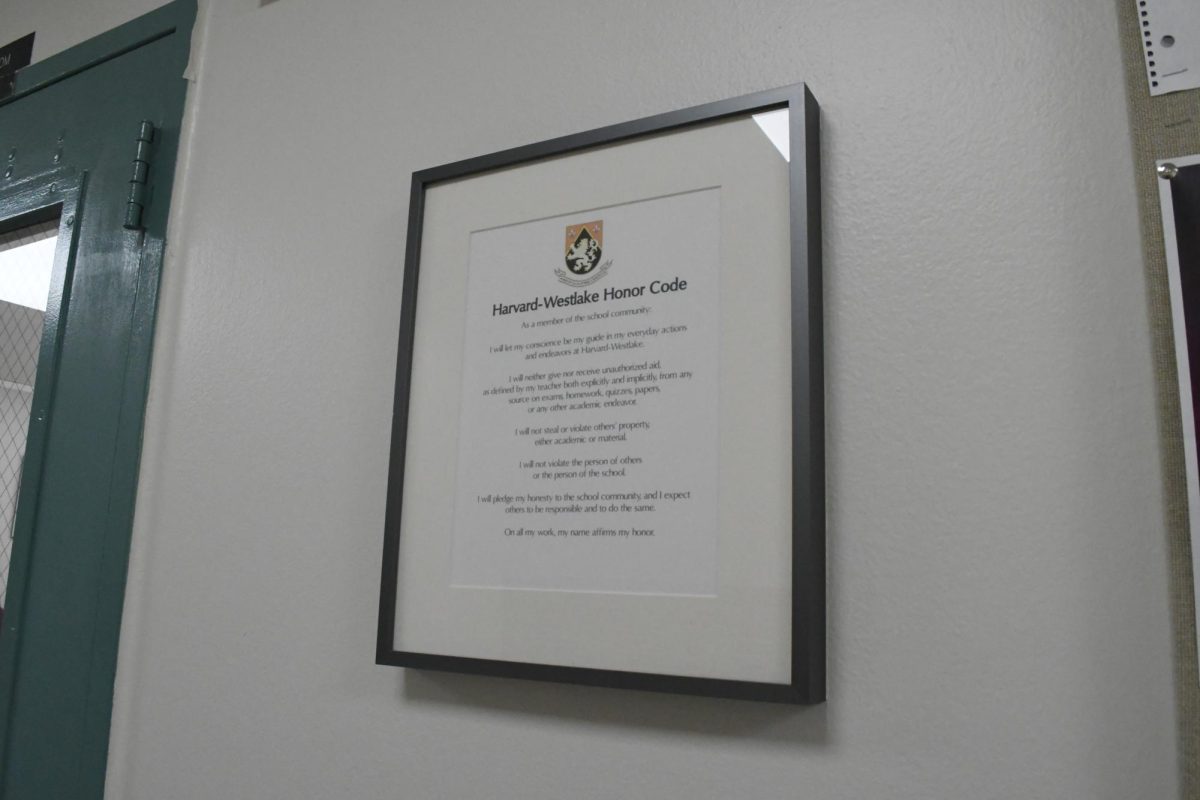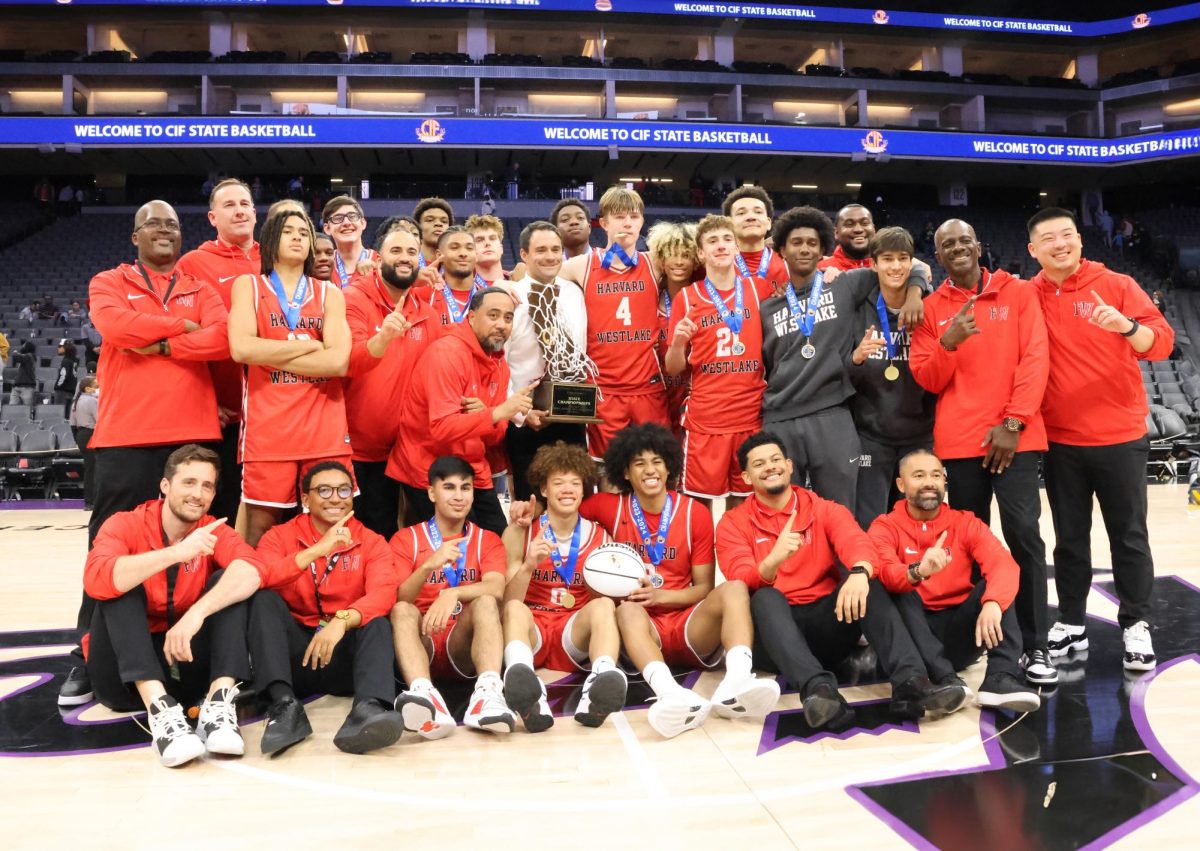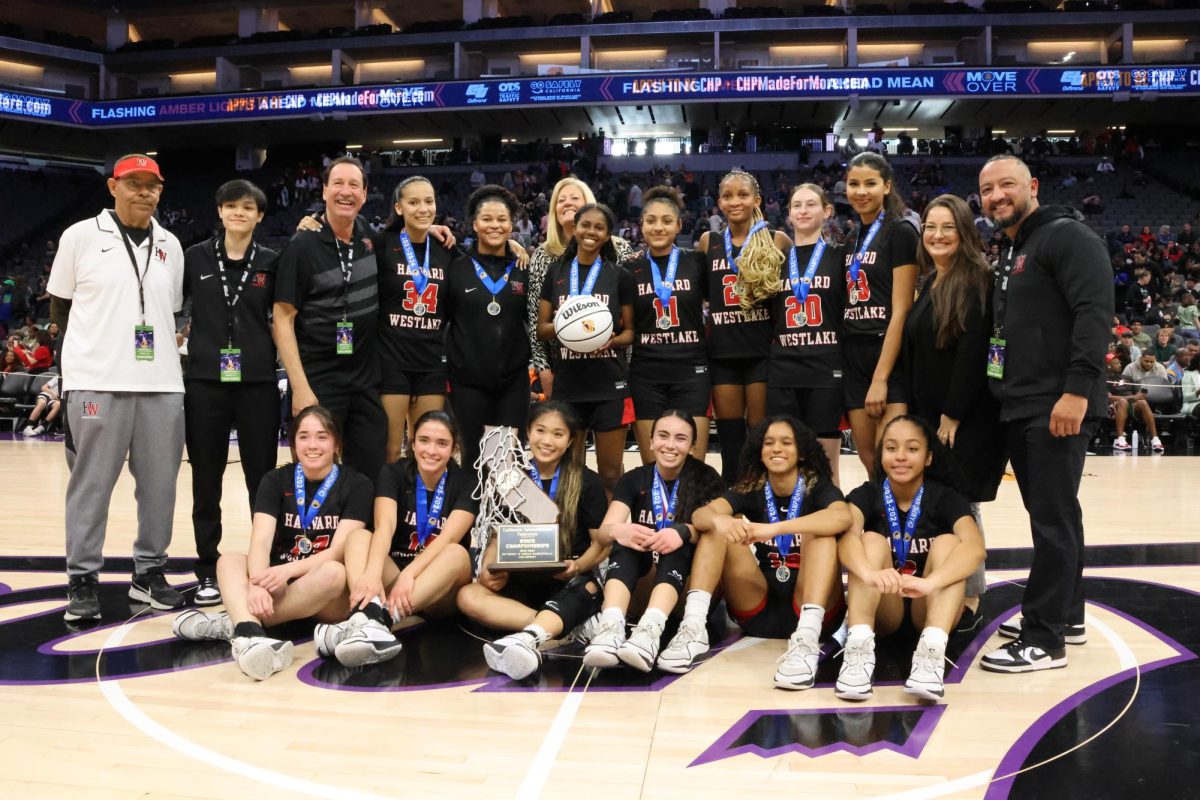Students, faculty and staff walked out of class as part of the National School Walkout on Wednesday to honor the 17 victims of the Marjory Stoneman Douglas shooting last month in Parkland, Florida.
The community gathered around 17 empty desks and victim profiles on Ted Slavin Field as student organizers Rachel Grode ’19, Lauren Juzang ’20, Abbie Howell ’18 and Senior Prefect Eli Timoner ’18 addressed students about ways that they can invoke change and encouraged them to register to vote. They joined thousands of students across the country who walked out of class for 17 minutes to advocate against gun violence.
The empty desks placed in the middle of the field symbolized each of the victims.
“These spots are empty and their lives are taken,” Timoner said. “That’s where they should’ve been. They should’ve been in class, and instead they will never get to do that again.”
Screenshots of texts that students at Marjory Stoneman Douglas sent during the shooting and bios of students and faculty that were killed lined both sides of the field. A video looped in the background of speeches that members of the Never Again movement made for government officials.
After the walkout, student organizers set up a table on the quad with fliers that gave information about the walkout and passed out t-shirts that read “Enough is Enough.” Students could also sign petitions to ban assault rifles.
“It’s really exciting to see students at Harvard-Westlake and all over the country causing lawmakers and adult citizens to think, vote and act in ways that we might not have thought, voted and acted without the activism of [this] generation,” President Rick Commons said.
The walkout was organized by students but sanctioned by the administration, so no detentions or suspensions were given to students who walked out of class.
“We felt really strongly that we could help if [students] needed to get help getting the stage set up but it all had to come from student ideas,” Head of Upper School Laura Ross said.
While the administration took a backseat in order to allow the movement at Harvard-Westlake to be run by students, they supported the student activism, Commons said.
“In some ways, ironically, it compromised the activism because you weren’t protesting anything because we were with you,” Commons said. “But, what we were with mostly is students who want change in their present and future coming together.”
[ngg_images source=”galleries” container_ids=”9″ display_type=”photocrati-nextgen_pro_slideshow” image_crop=”0″ image_pan=”1″ show_playback_controls=”1″ show_captions=”0″ caption_class=”caption_overlay_bottom” caption_height=”70″ aspect_ratio=”1.5″ width=”100″ width_unit=”%” transition=”fade” transition_speed=”1″ slideshow_speed=”5″ border_size=”0″ border_color=”#ffffff” ngg_triggers_display=”always” order_by=”sortorder” order_direction=”ASC” returns=”included” maximum_entity_count=”500″]
Involvement from administrators in the walkout deterred some students, like Emmanuel Zilber ’19, who said he chose not to participate because he didn’t feel the event was run by students.
“I protested the protest,” Zilber said. “It shouldn’t have been [the administration’s] responsibility to get involved.”
Administrators did not explicitly tell teachers to accommodate the walkout in their classrooms, Ross said. Ross told teachers that they are not responsible for reteaching material that students miss but advised that they reschedule tests planned for the day. History teacher Dror Yaron had scheduled an assessment during the walkout and said he found the walkout to be disruptive to his testing schedule.
“While I honor the walkout, I embrace all the principles behind it and I have an unflinching agreement with students to the cause, I wish that the school would have maybe coordinated so it wouldn’t have interrupted with class time,” Yaron said.
Some teachers joined the students in the walkout. Math teacher Kasia Williams, who said she recently became a naturalized US citizen, walked out with her students because she said she wanted to be a part of the community demanding change.
“I’m sad and I’m angry every time a mass shooting happens,” Williams said. “These feelings are then followed by disappointment, but no surprise, that nothing is changing in the gun debate landscape. I hope that we have reached the tipping point and that, as a society, we are finally ready to enact more reasonable gun laws.”
French teacher Jerome Hermeline also joined his students in the walkout, posting the night before on the hub that he supports the initiative and students who do not want to participate would have a silent work period.
“I know there were other schools who asked their teachers not to come or participate, but I appreciated that I think the students welcomed the fact that adults were there and wanted to be there,” Ross said.
English teacher Darcy Buck chose not to participate in order to uphold the mission of the student-led movement.
“I wanted to give the students the space to do their thing,” Buck said. “I wouldn’t say that adults were unwelcomed but I felt that we certainly were unneeded. It was more appropriate to just leave it to the students.”
Math teacher Woo Sim also said he kept teaching during the walkout to ensure students participated on their own volition, but told his students that he supported their desire for activism.
Two of his students chose to stay in class during the time of the walkout because their personal opinions did not align with the walkout’s stance on gun control, Sim said. One of those students left the class at the same time students joined the walkout to post posters on the math hall bulletin boards defending his second amendment right, Sim said.
“This wasn’t about repealing the second amendment,” Howell said. “This was about making change so people can go to school and to public places without being afraid of being victims of gun violence and mass shootings.”
Ross emphasized the importance of acknowledging that students of color have tried to call attention to issues of gun violence in the past, but those movements didn’t gain as much traction.
“I’m so grateful that the nation’s paying attention,” Ross said. “This is a big deal. But, I think it can’t be ignored to think about why is it that this is different. One of the things about American society is, in lots of ways, when communities of color talk about something it doesn’t go anywhere.”
At the Middle School, members of the Students Against Firearms in Education club expressed interest in holding a walkout, but decided with Head of Middle School Jon Wimbish to hold an all-school assembly instead.
When SAFE member Lilia Buckingham ’21 posted about the walkout that the group was planning on the SAFE Instagram account, she got an email from Wimbish and middle school dean Betsy Ilg saying that they thought an assembly would be more effective than a walkout, Buckingham said.
Initially there was backlash from middle school students who wanted to participate in a traditional walkout, but by the time of the assembly students were happy to have an outlet to express their opinions, SAFE members Sophia Musante ’22 and Maddie Morrison ’22 said.
“The assembly was a good idea, but I think it should have been more about students taking initiative themselves and exercising their abilities to walk out,” Morrison said. “They should do it because they wanted to, not because the school was making them.”
At the assembly, students honored each of the 17 victims and spoke about how young people can contribute to the fight against oppression. Then, students were able to go to an optional fair outside and write letters to congresspeople advocating against gun violence.
“It was successful because the teachers didn’t limit what we said,” Buckingham said. “They just didn’t want anything to be too political. A lot of us would’ve preferred to do a walkout, even if it was just onto the quad, because I think that would’ve been more empowering.”
Some students who identify as pro-gun expressed disappointment with the assembly at the Middle School because they felt like they were forced to talk about why guns are bad, Musante said she noticed.
“No matter what your politics are, it’s exciting to see students taking an active interest in creating change of state and national law or of school practices,” Commons said.

